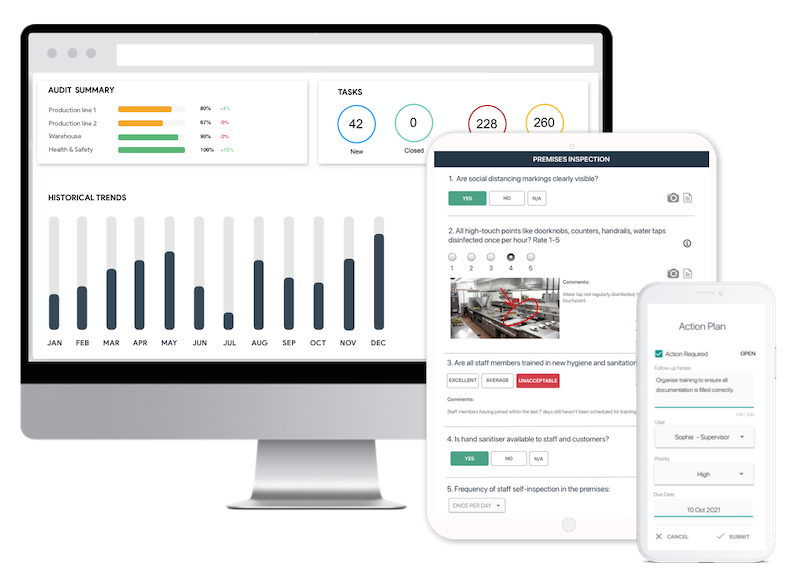OSHA Small Business Checklist
Safety And Health Programs
General Work Environment And Housekeeping
Posting Of Required Safety And Health Information
Recordkeeping And Reporting
5. If required, is information from OSHA Form 300 and Form 301 electronically submitted to OSHA by March 2 each year if: You have an establishment with 250 or more workers that is currently required to keep OSHA injury and illness records, or You have an establishment with 20-249 workers that are classified in certain industries with historically high rates of occupational injuries and illnesses
|
Photo
Comment
|
Is this sample what you are looking for?
Sign up to use & customise this template, or create your own custom checklist:
Checklist by GoAudits.com – Please note that this checklist is intended as an example. We do not guarantee compliance with the laws applicable to your territory or industry. You should seek professional advice to determine how this checklist should be adapted to your workplace or jurisdiction.
Easy inspection app for your digital checklists
- Conduct inspections anytime, anywhere - even offline
- Capture photos as proof of compliance or areas needing attention
- Instantly generate and share detailed reports after the inspections
- Assign & track follow-up tasks, view historical trends on a centralized dashboard
